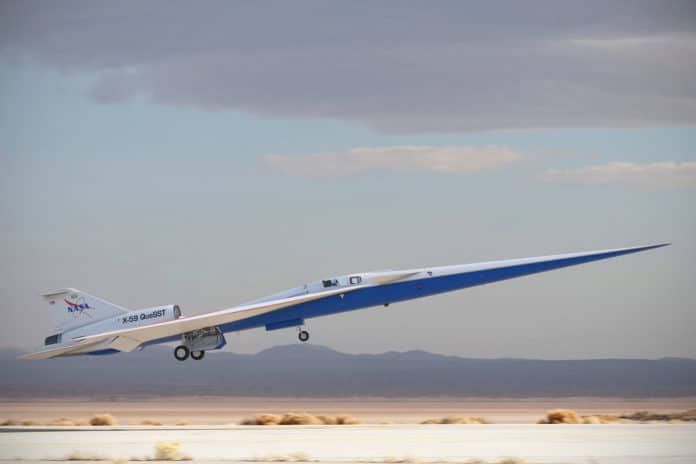Supersonic travel – flying faster than the speed of sound – is as cool as it sounds. After the retirement of the Concorde nearly two decades ago and the regulations prohibiting supersonic flight over populated areas, this type of machine should make a comeback very soon.
NASA’s X-59 Quiet SuperSonic Technology, or QueSST, the experimental aircraft, is bringing the agency ever closer to making the quiet commercial supersonic travel over land a reality. The space agency is developing new designs and the technologies needed to limit the noise created by supersonic booms, allowing supersonic aircraft to surpass the speed of sound while flying over populated areas. And soon, the aircraft, which is being developed by Lockheed Martin, is expected to take to the sky for the first time.
The ground noise is expected to be around 60 dB(A), about 1/1000 as loud as current supersonic aircraft. This is achieved by using a long, narrow airframe and canards to keep the shock waves from coalescing.
This week, NASA announced several upcoming milestones, including its plans to fly the X-59 QueSST over select communities to gather information about how the public perceives the quiet noise the X-59 is designed to produce (early 2024). Major ground testing will conclude in early 2022, leading to a target date for the first flight. Next year should bring acoustic validation flights.
The test flights should continue for the next three years, and the results of the community overflights will be delivered to the International Civil Aviation Organization and Federal Aviation Administration in 2027. With that information in hand, regulators will be able to decide if a change should be made in rules that prohibit supersonic flight over land – a decision that would be expected in 2028.
NASA recently completed the first successful wind tunnel test using a small-scale model of X-59 QueSST supersonic aircraft at its Glenn research facility following its assembly and transferral to Texas in December last year. The next test will take place in this year in the supersonic wind tunnels at the Japan Aerospace Exploration Agency, or JAXA, which will allow researchers to compare results from tests of the same small-scale model.
